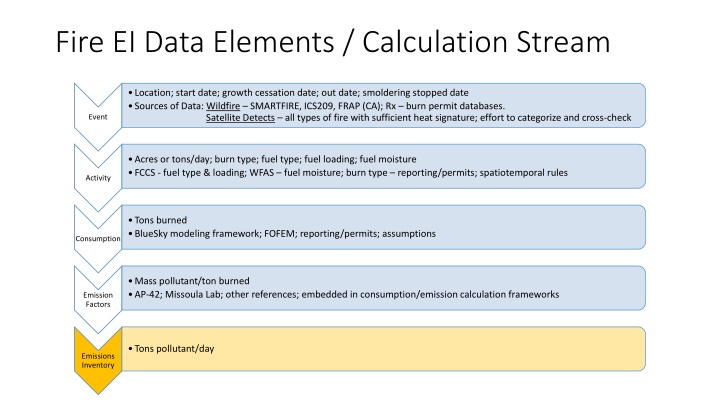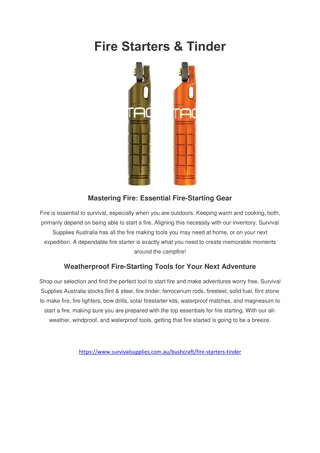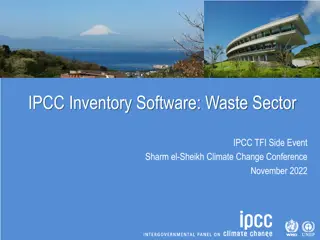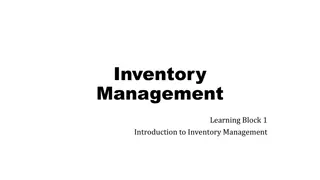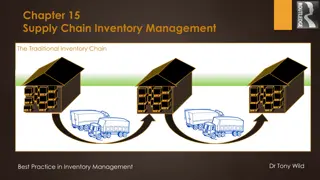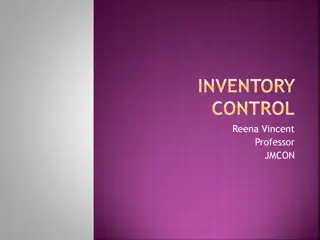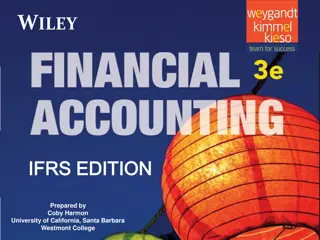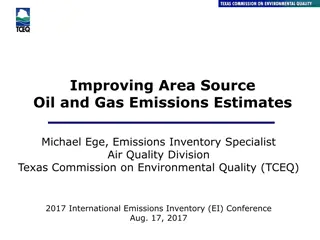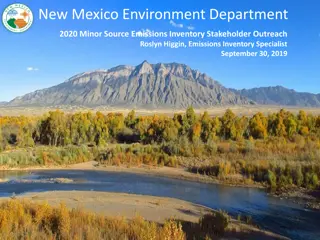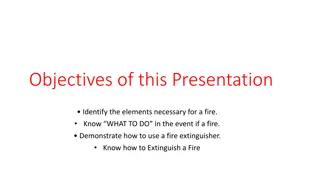Comprehensive Framework for Fire Emissions Inventory Data Elements Calculation
This document outlines a detailed framework for calculating fire emissions inventory data elements, covering aspects such as location, dates, data sources, fuel characteristics, consumption mass pollutants, emission factors, and emissions. It emphasizes the importance of data quality, consistency, and reporting standards for regional fire inventories. The content delves into missing aspects, procedural steps for agencies, and the involvement of subject matter experts for comprehensive implementation.
Download Presentation

Please find below an Image/Link to download the presentation.
The content on the website is provided AS IS for your information and personal use only. It may not be sold, licensed, or shared on other websites without obtaining consent from the author.If you encounter any issues during the download, it is possible that the publisher has removed the file from their server.
You are allowed to download the files provided on this website for personal or commercial use, subject to the condition that they are used lawfully. All files are the property of their respective owners.
The content on the website is provided AS IS for your information and personal use only. It may not be sold, licensed, or shared on other websites without obtaining consent from the author.
E N D
Presentation Transcript
Fire EI Data Elements / Calculation Stream Location; start date; growth cessation date; out date; smoldering stopped date Sources of Data: Wildfire SMARTFIRE, ICS209, FRAP (CA); Rx burn permit databases. Satellite Detects all types of fire with sufficient heat signature; effort to categorize and cross-check Event Acres or tons/day; burn type; fuel type; fuel loading; fuel moisture FCCS - fuel type & loading; WFAS fuel moisture; burn type reporting/permits; spatiotemporal rules Activity Tons burned BlueSky modeling framework; FOFEM; reporting/permits; assumptions Consumption Mass pollutant/ton burned AP-42; Missoula Lab; other references; embedded in consumption/emission calculation frameworks Emission Factors Tons pollutant/day Emissions Inventory
Fire EI Data Elements / Calculation Stream Location; start date; growth cessation date; out date; smoldering stopped date Sources of Data: Wildfire SMARTFIRE, ICS209, FRAP (CA); Rx burn permit databases. Satellite Detects all types of fire with sufficient heat signature; effort to categorize and cross-check Event Acres or tons/day; burn type; fuel type; fuel loading; fuel moisture FCCS - fuel type & loading; WFAS fuel moisture; burn type reporting/permits; spatio/temporal rules For the Fire Data Conceptual Model, we are shooting for Identified Quality at Every Data Element & sub-element Metadata/documentation at every step As understood overall Fire EI Data Quality Level 2+ ??? A known degree of consistency across the WRAP states Updates/availability at a frequency that accommodates use of the Fire EI for all of the S/L/Ts regulatory needs Activity Tons burned BlueSky modeling framework; FOFEM; reporting/permits; assumptions Consumption Mass pollutant/ton burned AP-42; Missoula Lab; other references; embedded in consumption/emission calculation frameworks Emission Factors Tons pollutant/day Emissions
Fire EI Data Elements / Calculation Stream a. b. What aspects are missing? Should the CM impose basic procedural steps for a WESTAR-WRAP agency to address in contributing to the regional fire inventory? i. Starting from EVENTS to build the inventory? ii. Starting from analysis of an existing EMISSIONS dataset to verify data as estimated? iii. Require fire type activity characteristics reporting (spatial, temporal, variation in magnitudes) Can pieces of CM inputs discussed so far be implemented by WESTAR-WRAP agencies given different levels of expertise and resources? What Subject Matter Experts should we bring in, if any, to flesh out CM? Location; start date; growth cessation date; out date; smoldering stopped date Sources of Data: Wildfire SMARTFIRE, ICS209, FRAP (CA); Rx burn permit databases. Satellite Detects all types of fire with sufficient heat signature; effort to categorize and cross-check Event Acres or tons/day; burn type; fuel type; fuel loading; fuel moisture FCCS - fuel type & loading; WFAS fuel moisture; burn type reporting/permits; spatio/temporal rules Activity Tons burned BlueSky modeling framework; FOFEM; reporting/permits; assumptions Consumption Mass pollutant/ton burned AP-42; Missoula Lab; other references; embedded in consumption/emission calculation frameworks c. Emission Factors Tons pollutant/day d. Emissions
